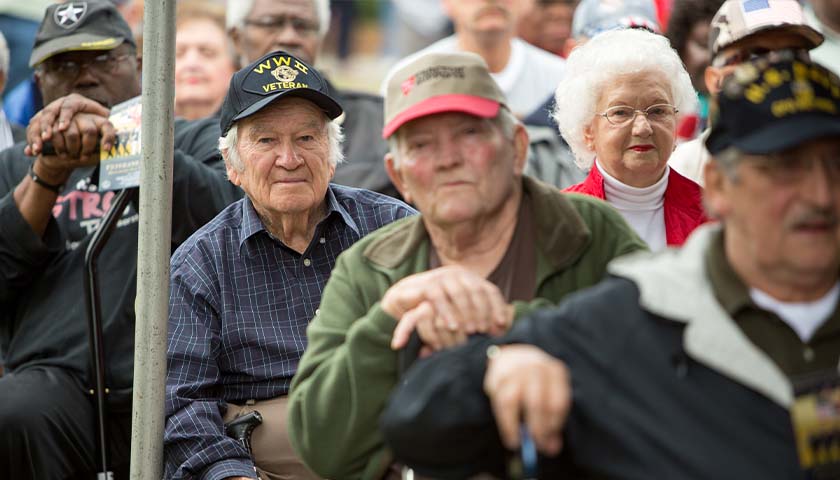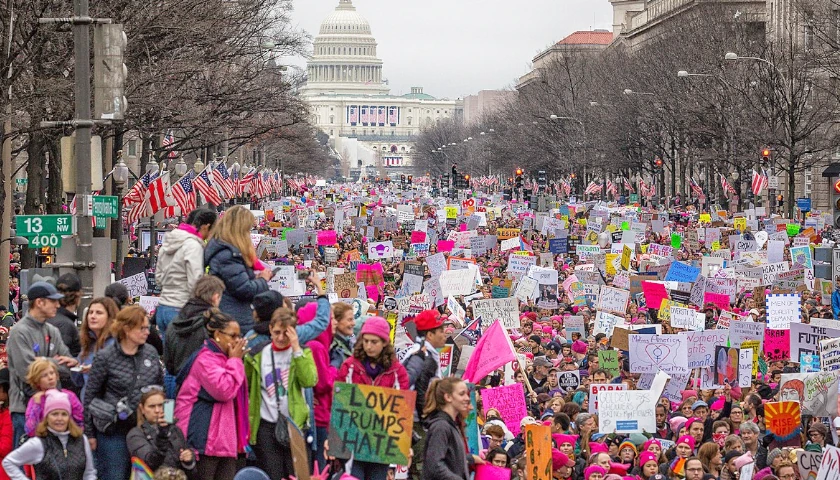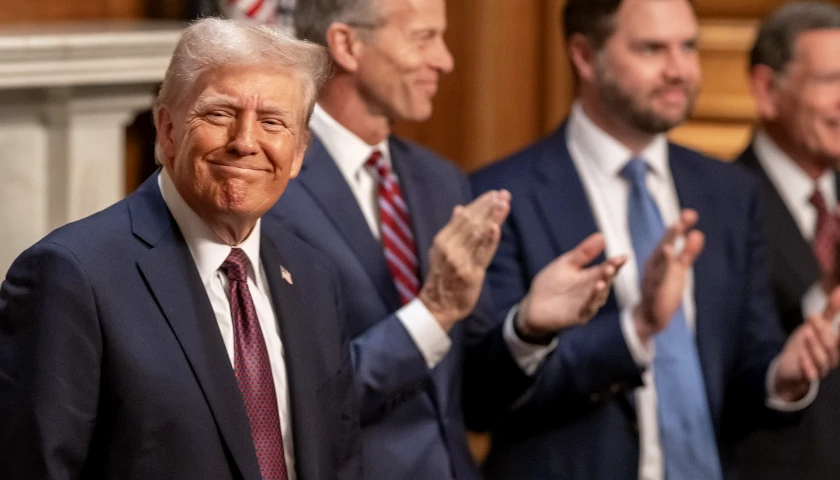by Thomas Spoehr
Friday is Veterans Day. We celebrate Veterans Day on the 11th day of the 11th month of the year, the day the guns fell silent in Europe following the armistice that ended World War I. For some, it’s a day off from school or work, but for the majority of Americans, it means so much more.
Veterans Day is the chance to thank and honor those who have selflessly served their country. Support for veterans has been mixed through our nation’s history. But today, through the efforts of great Americans, respect and assistance for veterans has never been stronger.
In increasing numbers, veterans are returning that support by continuing their service to their communities and country.
The term “veteran” comes from the Latin, vetus meaning “old.” In America and elsewhere, we use the word to describe those who have served in the military. But you don’t need to be old to be considered a veteran.
A veteran is a person who has served honorably in the U.S. military. He or she can be a citizen who served for four years and leaves the service at the ripe old age of 24.
U.S. veterans today enjoy a much different relationship with the populace—their government and the American people—than veterans have over the span of our history.
Revolutionary Beginnings
In the Revolutionary War, America relied on volunteers, although some state militias used conscription. Pay was the responsibility of the states and was sporadic or nonexistent. Many soldiers were promised cattle when their term of service ended. There was no system for pensions, death benefits, or disability payments. This led to unrest and dissatisfaction among those who had served so faithfully.
In 1830, years after the end of the war, Sgt. Joseph Plumb Martin, a Connecticut soldier who served for seven years in the Continental Army, summed up these feelings when wondered in his memoirs why he and his fellow soldiers were “turned adrift like worn-out horses.”
The number of people who served in the Revolutionary War never exceeded 30,000, and they were relatively ineffective in mustering any public opinion to better support veterans.
This national disinterest toward veterans continued with relatively minor reforms until the Civil War, where heretofore unprecedented numbers of Americans were killed or wounded.
Sensing a growing national obligation toward veterans, President Abraham Lincoln explicitly mentioned supporting them after the war. Post-Civil War reforms resulted in the establishment of a better system of pensions and payments, but most still remained meager.
Fast forward to World War I. Large groups of veterans returned from overseas; some with major needs. But the largest change in America’s treatment of its veterans came after World War II, which was pivotal in improving the relationship between veterans and their government.
The G.I. Bill of Rights
Congress passed the G.I. Bill of Rights, which included easy access to education, mortgages, and provisions for health care. Many have said that the World War II G.I. bill, which is estimated to have cost around $70 billion dollars, was the best investment America ever made.
It’s one thing for the government to provide for veterans returning from war. The G.I. bill and today’s 9/11 G.I. bill are tangible signs of that support.
But there is another dynamic, and one that has a psychological impact on veterans and the country as a whole. This is the phenomenon we experienced with Vietnam and Korea—two unpopular wars with the American people.
Veterans from the Korean and Vietnam wars were largely ignored or worse by average Americans and they struggled immensely upon their discharge.
That was an unfortunate period in our nation’s history, because those men and women had served their country during a time of war and deserved to be treated with respect when they returned home.
Fortunately, today things are markedly different. Veterans, no matter when and where their service took place, are deeply appreciated by the American people.
You can witness this appreciation with standing ovations when “honor flights” of veterans arrive at airports, to the presence of over 180 United Service Organization centers manned by patriotic volunteers across the country.
I was at Ronald Reagan airport recently when an Honor Flight arrived from St. Louis. There wasn’t a dry eye in the terminal as the World War II, Korean War, and Vietnam War veterans came off the plane, most in wheelchairs, to thunderous clapping.
Over 40,000 nonprofit organizations now exist to support the military or veterans.
Make no mistake, America’s support to its veterans and those serving, both tangible and intangible, is absolutely crucial to our ability to field a strong fighting force now and in the future. The value of this support manifests itself not just in successful recruiting, but in unmatched performance on the battlefield.
American service members go into combat today secure in the knowledge that if they are killed or wounded, they and their families will be taken care of. And so they willingly put their lives on the line.
Contrast that with service members of other nations where they must live with the knowledge that if they are hurt or killed, their families may become destitute. That weighs on them, and undoubtedly colors their battlefield behavior.
So although America has had a mixed history in the support to its veterans, today it seems that we have arrived at about the right place. The programs, systems, and appreciation that veterans deserve and need are generally in place.
Is there room for improvement? Absolutely, but the American people and Congress will continue to strive to achieve the best solutions for our veterans. And where the Congress and the administration don’t act, civil society does. Dedicated nonprofit organizations have moved in to provide crucial services that the government either cannot, or should not, provide.
Veterans Return to the Community
Thankfully, after having served their nation in uniform, many veterans continue serving their nation in other ways.
They bring a myriad of talents and perspectives to that service; most have traveled to other parts of the world, have had the advantage of seeing other governments, witnessed oppression, poverty, and authoritarianism, and have received intensive training in leadership and organizational skills. They know both discipline and self-sacrifice.
One of the best examples of post-military continued service can be found in the life of Gen. George C. Marshall. Marshall retired from the Army in 1945, having served 43 years in uniform, his entire adult life.
The last six years had been grueling and unrelenting as he guided the nation’s immense war efforts. He and his wife had earned a welcome rest. But President Harry Truman asked Marshall to continue to serve and sent him to China in an unsuccessful effort to negotiate a coalition government between the Nationalists and Communists. He was unsuccessful but spent two years trying.
America wasn’t close to being done with Marshall. Truman asked Marshall to serve as secretary of state. In that capacity, Marshall received credit for Europe’s post-war rebuilding, for which he received the 1953 Nobel Peace Prize.
After resigning as secretary of state, Marshall served as secretary of defense for a year at the start of the Korean War, and then chairman of the American Battle Monuments Commission and president of the American National Red Cross. His career remains one of the greatest examples of post-military service in our history.
And research suggests that veterans today continue to follow Marshall’s path. Today’s veterans are among our most community-oriented citizens. Studies show that they volunteer an average of 160 hours annually, 25 percent more than nonveterans.
Veterans belong to civic groups and attend neighborhood meetings, often assuming leadership roles. Furthermore, 48 percent of them vote in elections regularly, 16 percent more than nonveterans.
Veterans are now more than four times as likely as nonveterans to work for the federal government and 10 percent more likely than nonveterans to work for state and local governments. Although preferential treatment for veterans is certainly a factor, many former military members see government employment as a means of continuing to serve the nation.
And to support them, numerous nonprofit organizations help veterans to apply their energy to community and societal issues—The Mission Continues, Teach For America, Got Your Six, and others.
So while America certainly has obligations to its veterans, it seems as though veterans—without anyone telling or ordering them to do so—have gravitated toward continued service to their country, or community.
I’d like to mention in particular one type of community service that veterans are happy to provide to their country, and that’s the outreach and support to fellow veterans. Veterans have a special place in their heart for fellow vets and are also usually more effective in veteran support since they have walked in those boots. Nothing could be more important.
Veterans Day is a special day where we pause to celebrate those who have served, and in many cases continue to serve, our great country. For me, I’ll be thinking about those who raised their right hands and took the oath of allegiance to “support and defend the Constitution of the United States,” with oftentimes little knowledge of what that entailed.
– – –
Thomas W. Spoehr, a retired Army lieutenant general, is director of the Center for National Defense at The Heritage Foundation.
Photo “Veterans Day” by North Charleston. CC BY-SA 2.0.




